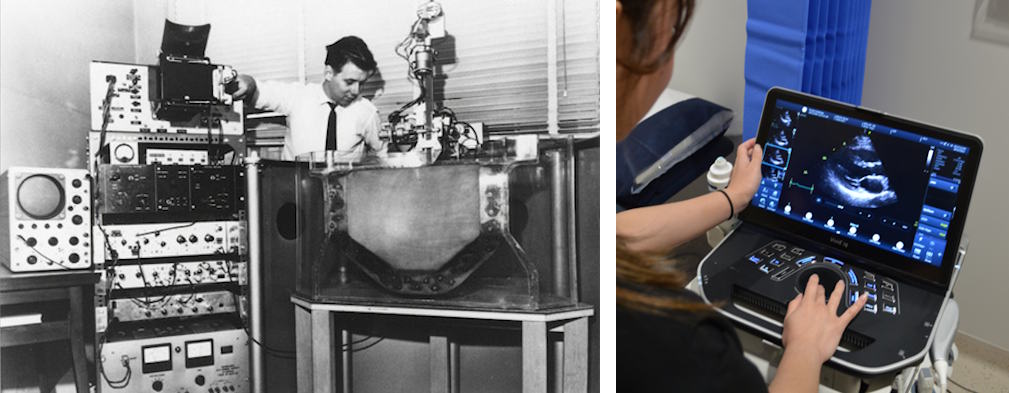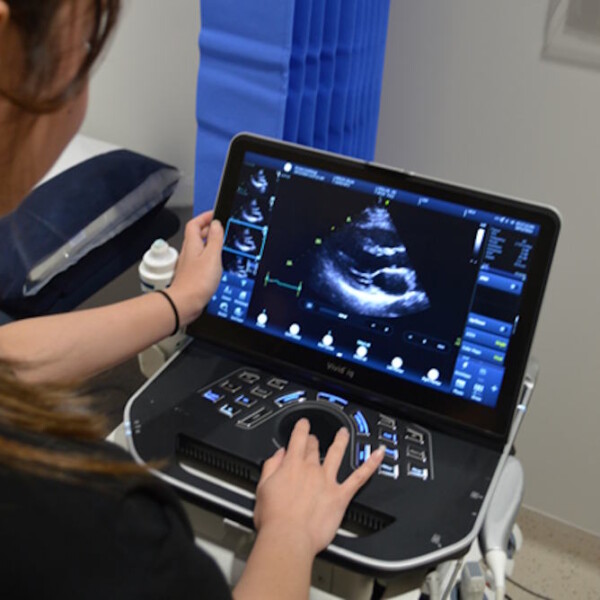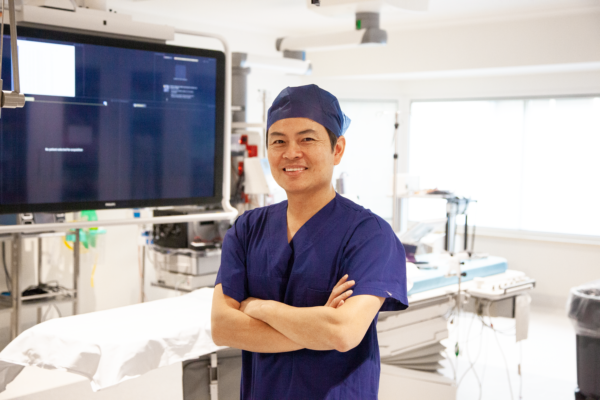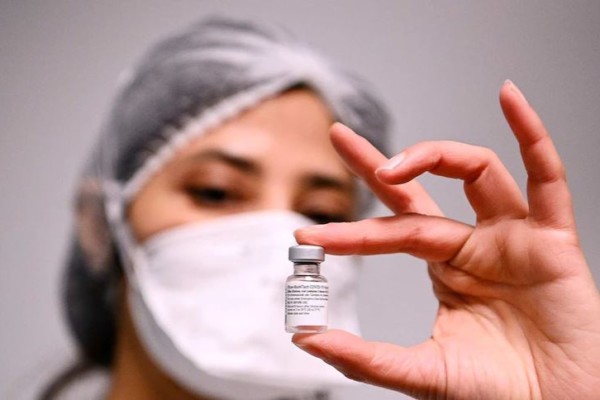Here at Access Cardiology, we are proud to be at the forefront of advancements in cardiac sonography, leveraging cutting-edge technology to deliver exceptional patient care. This blog co-authored with our experienced cardiac sonographer Jake, who has been dedicated to the field since 1995 explores the remarkable progress in echocardiography. Since the 1990s, these advancements have revolutionised heart failure detection and management, improving patient outcomes and shaping the evolving role of sonographers into one of the most dynamic and rewarding professions in healthcare.
Detecting Heart Failure Earlier: The Role of Advanced Cardiac Sonography
Heart failure remains a leading cause of morbidity and mortality, affecting more than 64 million people globally. Early detection, however, can significantly improve prognosis. A recent study showed that individuals whose first presentation of heart failure was due to hospitalisation were significantly worse off than those diagnosed in the community.
Modern cardiac sonography techniques enable the identification of subtle signs of heart dysfunction long before symptoms manifest. Advances such as strain imaging and 3D echocardiography have revolutionised the field, providing detailed visualisation and assessment of myocardial function.
For instance, speckle-tracking echocardiography allows sonographers to evaluate myocardial strain, detecting early myocardial dysfunction even when ejection fraction appears normal. This is particularly valuable in conditions like heart failure with preserved ejection fraction (HFpEF), which has historically been challenging to diagnose early.
Moreover, technologies such as contrast echocardiography and automated software tools offer enhanced imaging resolution and efficiency, enabling more precise assessment of heart structure and function. With these tools, sonographers and cardiologists can identify early signs of heart failure, such as diastolic dysfunction, chamber enlargement, or reduced cardiac reserve, allowing for timely intervention and improved patient outcomes.
The Sonographer’s Perspective: A Rewarding Career in an Evolving Field
The rapid pace of technological advancements in cardiac sonography makes it an exciting and dynamic field for sonographers. Each day offers new opportunities to learn and apply cutting-edge tools that directly improve patient care. The ability to detect and potentially prevent heart failure earlier provides sonographers with a profound sense of purpose and job satisfaction.
Sonographers today are more than just imaging technicians; they are integral members of the diagnostic team. They work closely with cardiologists, interpreting advanced imaging data and contributing to proactive care plans. The role has evolved to be more intellectually stimulating, demanding a combination of technical expertise and clinical insight.
Many sonographers derive great fulfilment from the direct impact of their work. Witnessing a patient’s journey from diagnosis to recovery and knowing they played a crucial role in early detection and management is an immensely rewarding experience.
Cardiac Sonography: Then and Now
Echocardiography, now an essential tool in cardiac care, is less than 70 years old. Many significant advancements in the field have occurred within living memory, with the technique becoming established in clinical practice only around 50 years ago. The first successful use of reflected ultrasound to examine the heart is credited to Inge Edler, a physician, and Hellmuth Hertz, a physicist, working together in Sweden, in 1953. Their collaboration began when Edler wondered if radar could be used to study the heart. After seeking advice from Hertz, who had experience with ultrasound in detecting metal flaws, they borrowed an ultrasonic scanner. After testing it on themselves, they were convinced that the ‘ultrasonic reflectoscope’ could be a valuable diagnostic tool for heart disease.
Since then, the field of cardiac sonography has evolved drastically. In the 1990s, 2D echocardiography and Doppler imaging were the primary diagnostic methods, providing essential but limited views of the heart. Diagnosing heart failure relied on indirect assessments, and subtle dysfunctions were easily missed.
From a practical standpoint, technology has come a long way. In the past, patient information, including referrals and clinical details, was manually recorded in a book. Studies were stored on VCR tapes, and the corresponding counter number was logged in the same book. Mechanical oscillating probes were used, and paper printouts of the images were stapled to reports. These printouts, printed on thermal paper, were controlled by a foot pedal, and the room often had a distinct smell of burnt ink. When cardiac surgeons wanted to review a particular case, the VCR tape had to be located from a filing cabinet and reviewed on the echo machine.
Today, however, patient information is automatically populated from electronic diaries, and studies are stored in the cloud, making them instantly accessible and easily shareable. The improvements in technology have revolutionised the way we operate and the precision of cardiac sonography.
Some groundbreaking innovations that have shaped the field include:
- 3D and 4D Echocardiography: These modalities provide real-time, high-resolution images of cardiac anatomy and function, offering unprecedented insights.
- Tissue Doppler Imaging (TDI): Introduced in the late 1990s, TDI significantly enhanced our ability to assess myocardial velocity and diastolic function.
- Artificial Intelligence (AI): Modern echocardiographic systems now incorporate AI to assist with image acquisition, analysis, and diagnosis, improving both efficiency and accuracy.
- Point-of-Care Ultrasound (POCUS): Portable devices now enable sonographers to perform echocardiograms in various settings, from emergency rooms to remote clinics.
These advances have transformed cardiac sonography from a reactive diagnostic tool into a proactive, preventative one. Sonographers can now detect preclinical disease states, stratify risk, and guide interventions tailored to individual patients, often before irreversible damage occurs.
A Proactive and Preventative Approach
In today’s healthcare landscape, the focus has shifted from merely treating heart failure to actively preventing it. Sonographers are at the forefront of this change, using advanced imaging tools to make a significant impact on patient outcomes by:
- Screening High-Risk Populations: Identifying patients with hypertension, diabetes, or a family history of cardiomyopathy and closely monitoring their heart health.
- Guiding Therapeutic Decisions: Providing real-time feedback on the effectiveness of treatments, such as beta-blockers or ACE inhibitors, to optimise patient care.
- Educating Patients: Using imaging findings to help patients understand their condition and emphasise the importance of lifestyle modifications to improve heart health.
This proactive approach not only improves patient outcomes but also helps reduce healthcare costs by preventing hospitalisations and the progression to advanced-stage heart failure.
The Future of Cardiac Sonography
Looking ahead, the future of cardiac sonography is incredibly promising. Emerging technologies such as AI-driven predictive analytics, handheld ultrasound devices, and even non-invasive tissue characterisation are set to further elevate the field. As these technologies continue to evolve, so too will the role of the cardiac sonographer expanding their capacity to make a meaningful difference in patients’ lives.
As we embrace the future, cardiac sonography will continue to play a pivotal role in transforming how we diagnose, manage, and prevent heart failure, offering hope and healing to countless patients around the world.

Sources
https://pmc.ncbi.nlm.nih.gov/articles/PMC9365309/
https://academic.oup.com/eurheartj/article/44/Supplement_2/ehad655.892/7393821
Image Credits











